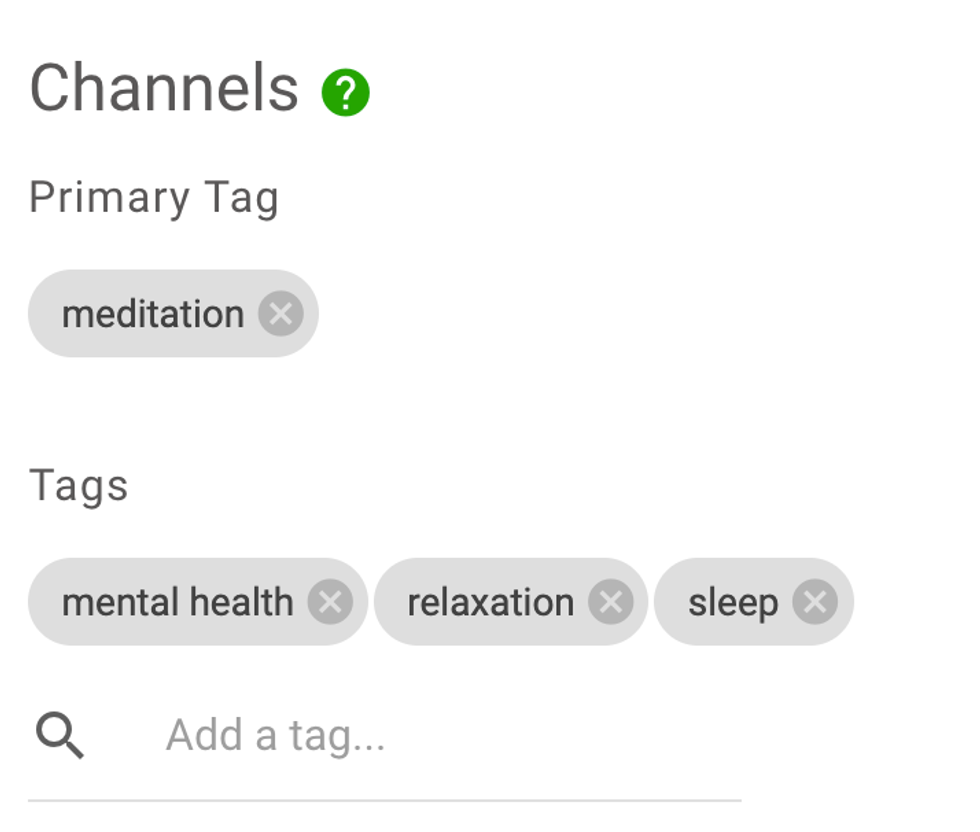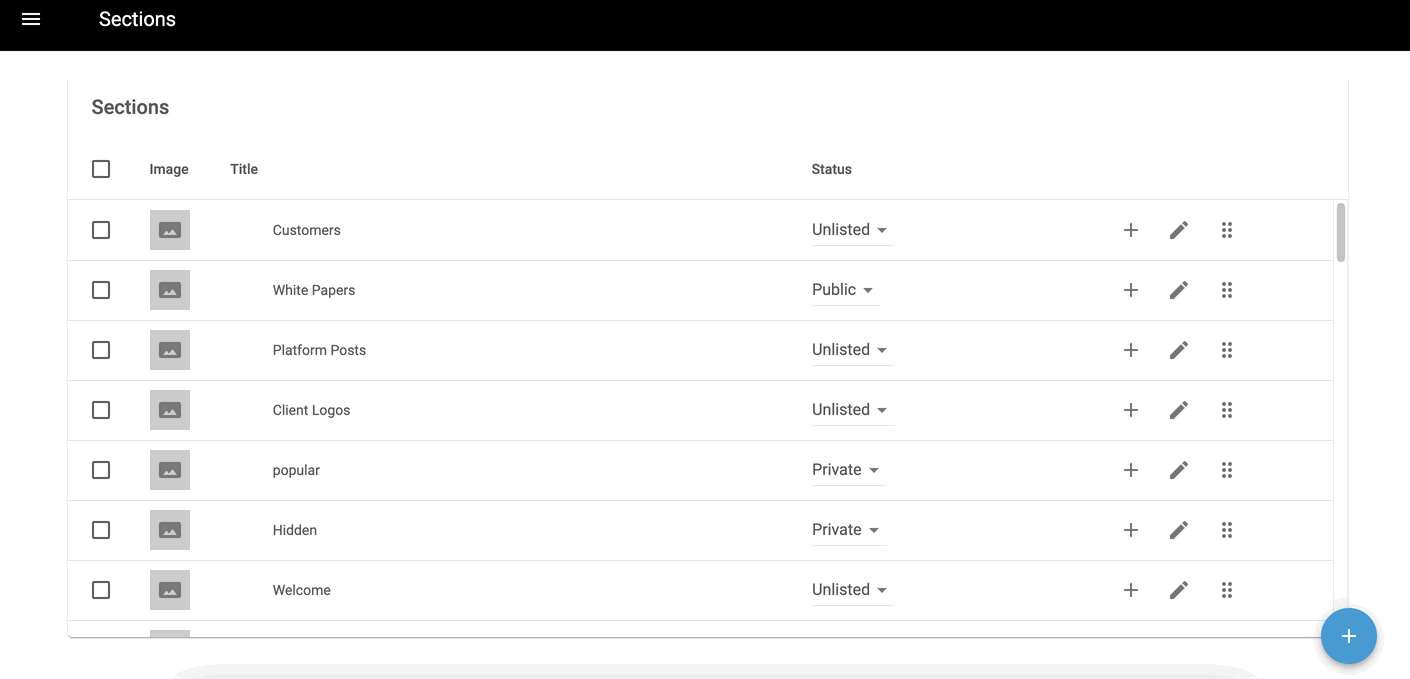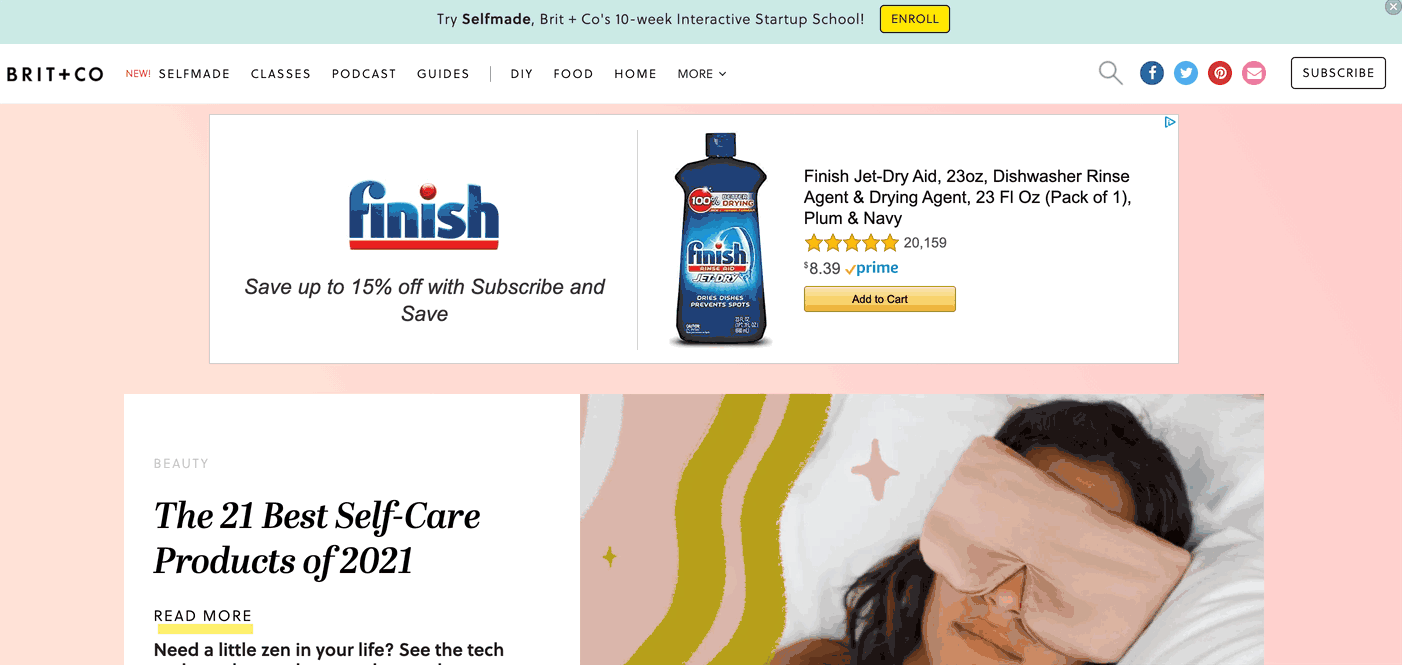It's no surprise that quality content can easily be spoiled by a poor site experience. This is why we're incredibly proud of the lightning-fast sites we power. But speed is only the beginning of the user experience.
The temperature on platform dependency has cooled in recent years, revitalizing the value of site visits and search strategy. This is good news for both users and publishers who need site stability to survive. Because of this shift, RebelMouse focuses on three primary key performance indicators (KPIs) to measure site usability and health:
- Sessions per User: The average number of site sessions that each user has in a given time period.
- Pages per User: The average number of pageviews that each user has in a given time period.
- Time per User: The average amount of time spent on site by each user.
In order for these metrics to shine, a site's architecture must be organized in a way that increases every user's time on site. The logic is simple: If a site is easier to navigate, the user will likely stick around longer. This is the gateway to user loyalty.
One important way we support these KPIs is through our intuitive tagging and section functionalities for content organization. Both of these features develop your site's taxonomy so that every topic is easy to search for, locate, and explore.
Types of Tags
On RebelMouse we have three different types of tags: primary tags, tags, and private tags.
Primary tags indicate what an article is about overall, and you can only add one per article. Think about a primary tag like the overarching summary of a post. For example, if an article is titled "Ten Ways To Meditate Before Bed," the primary tag could be set to "meditation."
Tags are very similar in that they should describe what the article is about, but you are not limited in number (though we recommend no more than 5–10 tags, since more can be overwhelming for users). These tags can be both more specific and more broad than the primary tag. Using our meditation article as an example, corresponding tags could include "mental health," "relaxation," and "sleep."
Private tags are generally used in AdOps to ensure that you can pass sensitive information to your ad management platform without the details of the tags being shown to your site's visitors. First, let's take a look at how we use primary tags and how they can set up any site for success.
The Benefits of Primary Tags
A primary tag is built on the same principle as a primary section. One tag lets you assign higher importance to certain pieces of content when processing and organizing your posts.
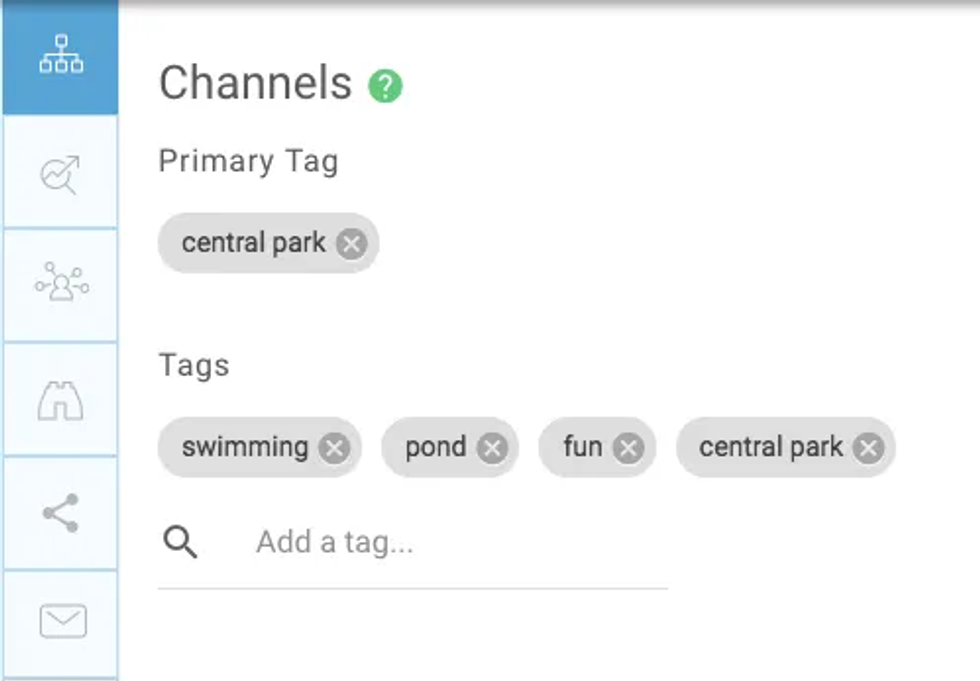
Dynamic Taxonomy: One of the primary benefits of using a primary tag is that it exposes the depth of content available to your users.
Using a variety of relevant tags for every article, rather than just repeating the same handful of sections, opens up more opportunities for targeted descriptors. For example, instead of using "inclusivity" as a section over and over again, a primary tag can be used to create specific content flows for topics like "diversity," "marginalization," and "corporate responsibility."
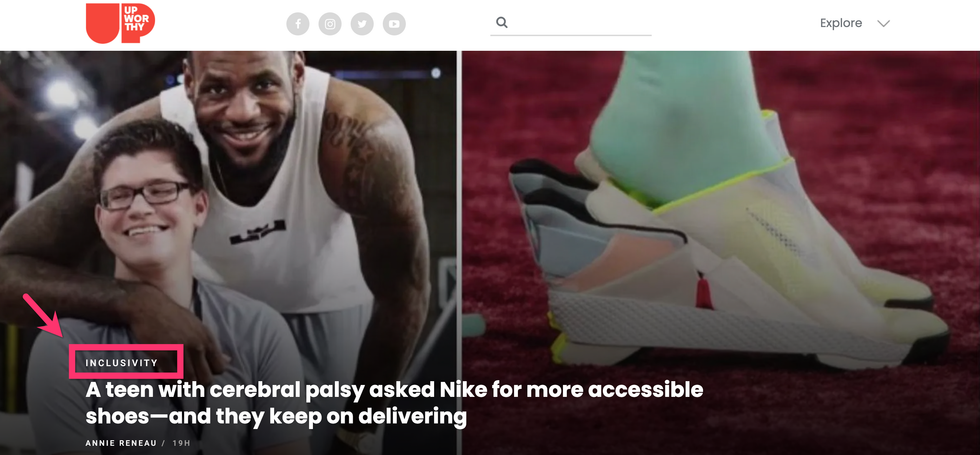
Richer SEO: Since a primary tag exposes more information about your article, it also supplies more relevant data to Google's search algorithms. Surfacing content in usable ways supports Google's mission to serve content based on audience behavior and intent instead of outdated and frowned-upon SEO methods like keyword stuffing. This approach is called white hat SEO, or ethical SEO.
By targeting specific interests, your dynamic tag structure will allow Google to more accurately understand your article's content and rank it accordingly. On RebelMouse, this creates a trickle-down effect, because users can click a tag and quickly get directed to more relevant articles, which boosts your SEO efforts further.
Here's how the site experience looks on RebelMouse-powered EcoWatch when viewing their primary tag "plastics."
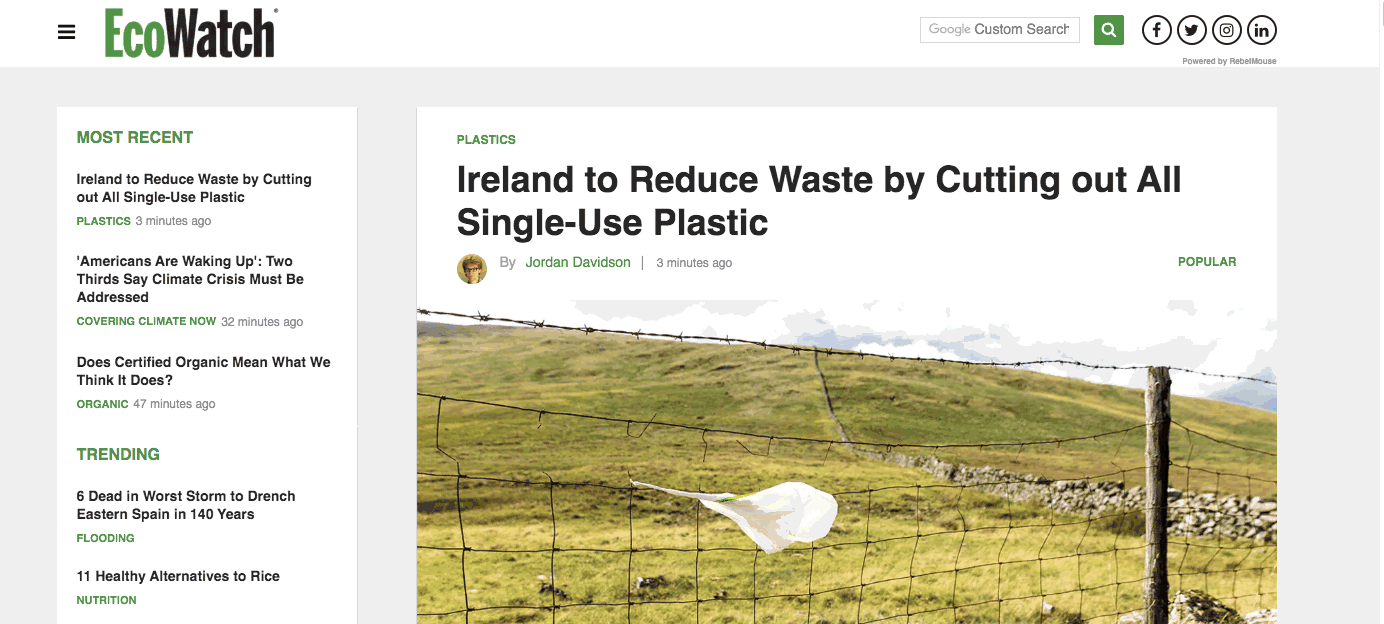
Looking again at EcoWatch's use of primary tags, it's important to note that a primary tag is exposed on every one of their articles. They're also used in a left-hand navigation module that features the latest stories and trending topics:
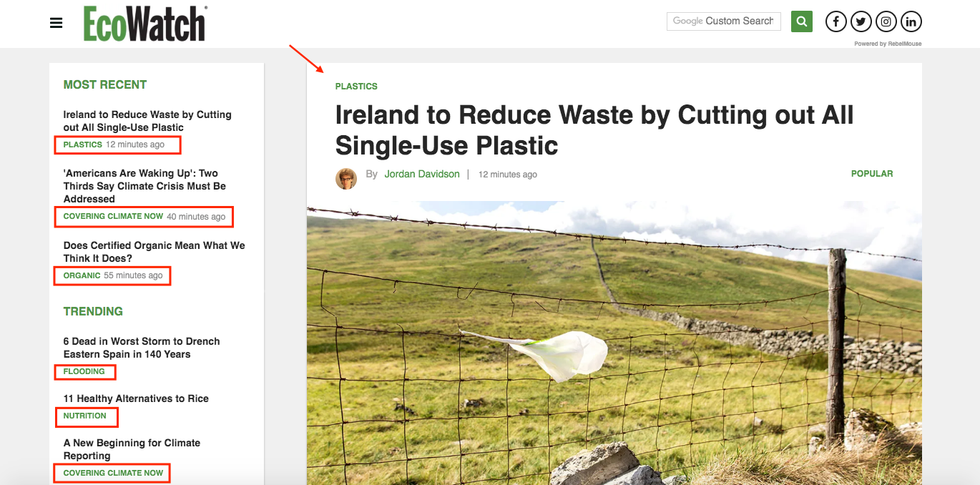
Creating this kind of user experience makes users' navigation around the topics they care about effortless, which means core KPIs are nurtured with every site visit. It's a strategy that is certainly paying off for EcoWatch.
Leveraging Content Organization With RebelMouse's Sections Dashboard
Primary tags are a great way to expose topics on your site that maybe users didn't even know was available to them. Underneath the structure of primary tags, however, is the foundation of section organization. Sections are your chance to lay out a roadmap of your site's key categories to best communicate to your readers what your site is all about.
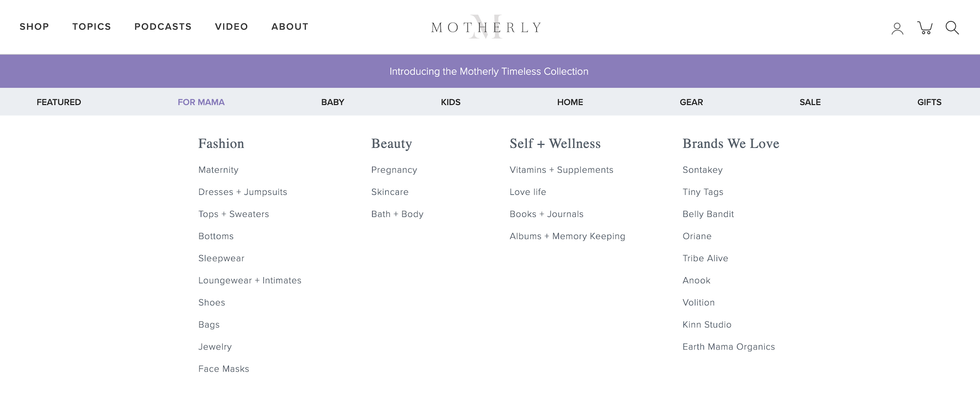
Our platform features a comprehensive Sections dashboard to easily manage your site's sections.
No matter how broad or narrow your content, the dashboard makes it easy to add new sections, edit existing sections, and reorganize the structure of your sections at any time.
The depth of your organization isn't limited, either. With each section comes the ability to create parent-child subsections, so you can get as detailed as you need to when categorizing your site's content.
To learn more about the full capabilities of our Sections dashboard, including the features you can assign to each section, reordering capabilities, and visibility options, click here.
Why Sections Help Your Site's Core KPIs
As mentioned earlier, RebelMouse traffic experts are constantly focused on improving the three KPIs that matter most to site usability and building audience loyalty. These metrics help answer the following questions:
- Frequency: How often are users coming to the site?
- Depth: How many articles does each user consume?
- Duration: How long is each user staying on the site?
By taking a methodical approach to the organization of your site's sections, you can create an intuitive user experience that improves each of these KPIs. The idea is to lead your reader on a journey of seemingly endless content that's intuitive to navigate.
For example, RebelMouse client Brit + Co has a spinoff content hub called B+C Classes that features DIY-inspired online classes for its readers. Directly from the Brit + Co home page, it's easy to find the Classes page. And from there, you can quickly drill down further into different class types.
Setting up sections to be a content roadmap, rather than just an organizational tool, will drive the KPIs aimed at increasing each user's time spent on your site. If your site's easy to dive into and explore, then you can expect your audience to stick around longer.
Section organization also allows for sites with large libraries of content to keep evergreen and showcase pieces at the forefront, no matter how many new articles are published. If your site's sections are transparent on your home page, and you've created an taxonomy that's easy for users to explore, you won't have to worry about buried pieces of key content that your readers miss.
Start Leveraging Primary Tags and Sections on RebelMouse
If you aren't on RebelMouse yet, request a proposal today and let's start working together to make sure your site is optimized for user growth. If you're already publishing on RebelMouse, and want to learn more about the best practices surrounding sections and tags, contact your account manager or email support@rebelmouse.com.


